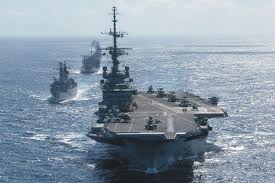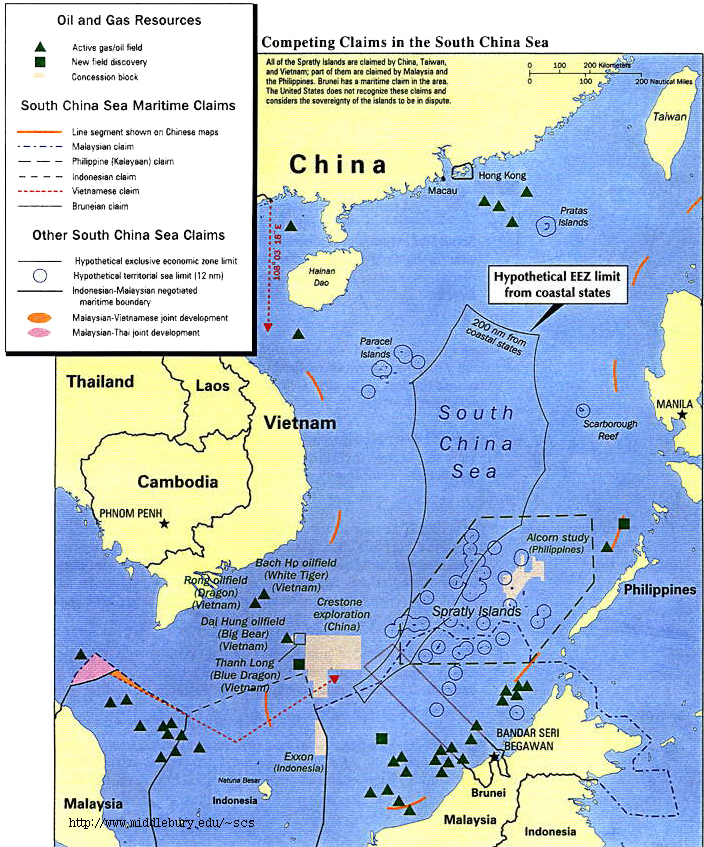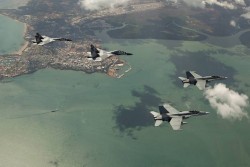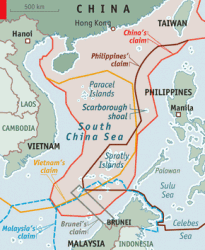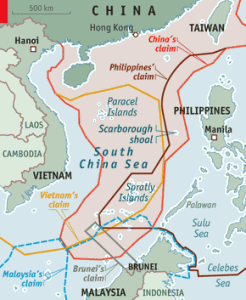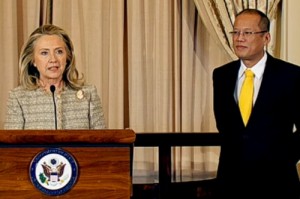By Andrew Davies
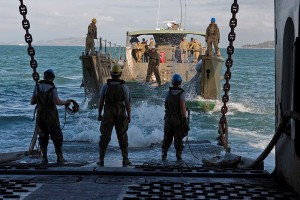 In the last few weeks, we’ve seen some impressive photographs and the naming ceremony of the first of the 27,000 tonne Canberra-class landing helicopter docks (LHDs) coming together in the BAE shipyards in Williamstown, Australia. These vessels will do much more than replace the Manoora and Kinimbla amphibious ships retired precipitously in 2011. They’ll greatly expand the capability of the Australian Defense Force (ADF) to deliver people and equipment around Australian or onto foreign shores.
In the last few weeks, we’ve seen some impressive photographs and the naming ceremony of the first of the 27,000 tonne Canberra-class landing helicopter docks (LHDs) coming together in the BAE shipyards in Williamstown, Australia. These vessels will do much more than replace the Manoora and Kinimbla amphibious ships retired precipitously in 2011. They’ll greatly expand the capability of the Australian Defense Force (ADF) to deliver people and equipment around Australian or onto foreign shores.
In turn, this new capability will provide future governments with a wider range of military options during times of crisis—although perhaps not as substantial a boost as might be expected. The problem with amphibious operations is that they become much more demanding when there’s any significant opposition.
If we look at the recent Defence white paper, we can get some insight into current defence thinking. The notion of amphibious operations in support of combat activities is still there from the 2009 paper:
The ADF would seek to undertake operations against an adversary’s bases and forces in transit, as far from Australia as possible. This might involve using strike capabilities and the sustained projection of power by joint task forces, including amphibious operations in some circumstances.
The aim, we’re told is to eventually produce an amphibious capability suitable for employment across the spectrum of operational activities—i.e. from humanitarian and disaster relief missions through to power projection operations. That’s a huge range of activities, and the upper end would require considerable support from the ADF’s most capable combat platforms—air defence from fast jets overhead and air warfare destroyers; sea control from surface combatants and submarines; and extensive intelligence support. In short, most of the ADF’s capability would have to be mobilised to support opposed amphibious operations.
But there’s a considerable geographic limitation that needs to be factored in. As our map last week showed, air cover from Australian bases won’t cover many of the land masses in the archipelago to the north or elsewhere in the ADF’s primary area of operations. Even with air-to-air refuelling it wouldn’t take long for the RAAF to struggle to provide standing air cover much beyond 1,000 km range.
If defence planners are serious about conducting amphibious assault operations using these vessels, they’d be looking seriously at the option of a naval task group taking along its own air power. Opposed operations without air cover aren’t a recipe for success. The Falkland Islands War, for example, would have been a resounding defeat for the British without the Harriers embarked on their aircraft carriers.
The Navy takes pains to remind us that these will be the largest ships they’ve ever operated (video), even bigger than the aircraft carriers HMAS Melbourne and Sydney. The Melbourne was retired in 1982, and the ADF hasn’t had the ability to take its own air power along on naval operations since. The large flight decks of the LHDs are getting a few naval stalwarts excited about getting fixed wing aviation back into the fleet, and there were a few murmurs around Russell Hill when the 2009 white paper was being developed (and when money wasn’t so tight).
The combination of the Canberra-class and the short take-off vertical landing (STOVL) version of the Joint Strike Fighter seems to be a credible option for getting back into the fixed wing naval aviation business. The Australian ships are built to the specs of the Juan Carlos-class amphibious assault ship operated by the Spanish Navy. The Spanish vessels embark Matador (Harrier) short take-off vertical landing (STOVL) jet operations. In fact, the model LHD in the DMO foyer had half a dozen jets below decks at first, although they discretely disappeared at some stage.
But the two ships the ADF are getting won’t be configured for fixed wing operations, lacking as they do the radar and air control systems necessary. Nor is there any plan to acquire those systems or the STOVL aircraft required. And budget pressure will mean that it’s not likely to happen in the foreseeable future.
That’s likely one reason for the 2013 Defence white paper placing much more emphasis than its predecessor on security, stabilisation, humanitarian assistance and disaster relief operations. Also on the agenda are cooperation and engagement activities in the South Pacific and Timor-Leste, including bilateral and multilateral exercises with regional security forces.
In fact, the South Pacific countries can expect regular visits from the Canberra class. We’re told that the ADF will establish an ‘enduring joint amphibious presence in the South Pacific through regular deployments’. That’s a long way from amphibious assault far from home, but much more attuned to the scenarios that the ADF is actually likely to be tasked to respond to.
At most, two LHDs could land a couple of thousand Australians on a beach at the end of a vulnerable supply chain—and it’s hard to find problems that have that as the solution. But even non-warlike missions can require an across-the-beach force to seize entry points. That’s consistent with the announcement that Army’s approach to amphibious forces will be initially modest, with a single battalion (2RAR) to be trained as an Amphibious Ready Element, with options to expand later if required.
These are all sensible and achievable developments. It will take time to get the ADF used to operating and deploying from the new ships, and a gradual approach will allow practice and doctrine development that can be built on later. It’s also not going to bleed Army’s training resources dry at the expense of all of the other tasks they are required to prepare for.
Above all, it means that reality has intervened in the development of an amphibious capability. Our land forces have the capability and capacity to do many things that will add to the security of the region and help in times of dire need. But they won’t have the scale, firepower or air cover for decisive amphibious combat operations in any serious conflict. Thankfully, that seems to be off the table for now.
This post first appeared at the Australian Strategic Policy Institute (APSI), and is an expanded version of a piece ‘Real Amphibious Operations Aren’t Easy’ in the defence supplement in The Australian, 25–26 May.
Andrew Davies is a senior analyst for defence capability at ASPI and executive editor of The Strategist. Image courtesy of Department of Defence.

